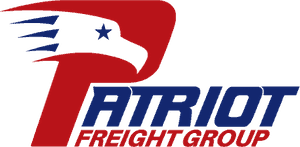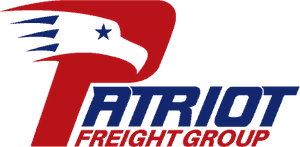Did you know that excavators are used for digging trenches and demolishing structures and play a crucial role in a wide range of construction tasks? These strong, adaptable types of machinery are crucial to the building sector.
It is necessary to have a solid understanding of the many types of excavators in the commercial construction market. It is also essential to learn about the various applications that can be found for each one.
Are you trying to find the right excavator for your construction business? Carry on reading below for a quick look at the different kinds of excavator options so you can find the right one for you.
Types of Excavators
Excavators come in various sizes and configurations. Each excavator is designed for specific tasks and environments. Some examples are:
- Crawler excavators that provide stability and mobility on rough terrains
- Wheeled excavators that offer swift maneuverability between job sites
- Mini excavators are perfect for urban areas or small construction sites where space is limited
- Long-reach excavators excel in dredging and deep excavation projects
That is but the tip of the iceberg! There’s an excavator type for every construction need.
One fascinating aspect of excavators is their adaptability. They can be equipped with different attachments, such as the following:
- Buckets extensions
- Breakers and grapples
These attachments enhance their capabilities and allow them to perform a wide range of tasks. With the right attachment, an excavator can tackle everything. For example:
- Digging and lifting
- Loading and material handling
This versatility makes excavators invaluable assets on construction sites, saving time and labor costs.
Excavators also help the building industry by making excavation faster and more accurate. Because of their power and accuracy, building workers can dig to the right depth and reach. This ensures that the foundations and trenches are prepared correctly.
Also, excavators are important to demolition work because they can take down structures quickly and safely.
Here are some of the most common types of excavators:
Crawler Excavators
Crawler excavators, also known as track excavators, are popular in the construction industry for their exceptional stability and mobility on various terrains. Let’s take a closer look at the features and applications of these robust machines.
Features and Design of Crawler Excavators
Crawler excavators are designed with tracks instead of wheels. This is what gives them their maneuverability on rough and uneven surfaces.
The tracks distribute the machine’s weight over a larger surface area. As a result, it reduces ground pressure and prevents it from sinking into soft ground. This feature is particularly beneficial in construction sites with challenging terrains.
Applications and Uses of Crawler Excavators
Due to their rugged design and stability, crawler excavators are ideal for heavy-duty tasks. They excel in the following:
- Digging deep foundations for buildings and structures
- Building trenches for utility lines and even mining operations
The powerful hydraulic systems of crawler excavators enable them to handle substantial loads. They work with accuracy, which makes them useful on building sites.
Versatility and Attachments for Crawler Excavators
Crawler excavators can be equipped with various attachments to expand their capabilities. These attachments can include any of the following:
- Buckets for excavation,
- Hydraulic breakers for demolitions
- Grapples for material handling
- It does not stop there, and there are many more
With the ability to switch attachments quickly, crawler excavators become adaptable tools. They can efficiently tackle a wide range of construction tasks.
Wheeled Excavators: Swift Mobility for Versatile Projects
Wheeled excavators provide a unique set of advantages with their wheel-based design. This makes them a popular choice for specific construction tasks and projects. Let’s look deeper into the features and applications of these adaptable machines.
Enhanced Mobility and Speed
The defining feature of wheeled excavators is their wheels. They offer swift mobility and effortless maneuverability.
Unlike crawler excavators, wheeled excavators can move quickly and easily between different job sites. This makes them highly efficient for projects that require frequent relocation. They are particularly suitable for road construction projects, where the ability to navigate paved surfaces is crucial.
Maneuverability and Flexibility
Wheeled excavators boast excellent maneuverability. This maneuverability lets them easily move within tight spaces and work in confined areas.
This maneuverability makes them highly versatile for a range of construction jobs. These include some of the following:
- Urban construction
- Infrastructure projects
The compact design and smooth operation of wheeled excavators contribute to improved productivity and efficiency on the job site.
Applications and Benefits
Wheeled excavators have agility and speed. These excavators excel in tasks that involve the following:
- Digging foundations and trenches
- Lifting of heavy materials
- Material handling on paved surfaces
They are commonly used for the following construction tasks:
- Road maintenance
- Utility work
- Urban construction projects
Wheeled excavators are also favored for their quick transportation capabilities. This is because they can be driven directly from one site to another. This reduces the need for additional equipment for transportation.
Mini Excavators: Compact Powerhouses for Limited Spaces
Mini excavators are compact and lightweight machines that pack a punch when it comes to performance. These compact excavators are very adaptable. They are designed to be used where space is limited.
Mini Excavators are ideal for use in urban areas and on smaller construction sites. Let’s explore the features and applications of mini excavators.
Compact Size and Maneuverability
As mentioned above, the thing that makes mini excavators unique is that they are small. Their small size makes it easy for them to move through tight areas, making them perfect for building in cities and on small job sites.
Mini excavators can maneuver effortlessly around obstacles and fit into areas that larger machines would struggle to reach. This ensures precise and efficient operation.
Impressive Digging Capabilities
Despite their smaller size, mini excavators have impressive digging capabilities. Equipped with powerful hydraulic systems. They can also:
- Be equipped with attachments such as buckets and augers
- They can effectively dig trenches and foundations
- They can help with landscaping projects
Their versatility extends to the following:
- Pipe installation
- Light demolition work
- Even Light utility maintenance
This makes them indispensable in a range of construction projects.
Improved Capacity for Change
Mini excavators are extremely flexible since they can be fitted with a wide range of attachments. Attachments such as the following:
- Buckets and grapples
- Hydraulic breakers
- Hydraulic compactors
These attachments expand the capabilities of mini excavators. They allow them to tackle a wide variety of tasks efficiently.
This versatility makes mini excavators a cost-effective investment, as they can be adapted for different projects without the need for additional machinery.
Long-Reach Excavators: Reaching New Depths with Precision
Long-reach excavators are specialized machines designed for projects that demand extended reach. With their extended arm and boom, these excavators excel in dredging and deep excavation tasks. Let’s look into the features and applications of long-reach excavators.
Extended Reach and Stability
Long-reach excavators are different from regular excavators because their arm and boom are longer. This lets them reach farther than regular excavators.
This extended reach is especially valuable for projects near bodies of water. For example, the following:
- Riverbank restoration
- Harbor Construction
- Dredging operations
Despite their extended length, long-reach excavators are designed to maintain stability during operation. This ensures safe and precise excavation in challenging areas.
Specialized Applications
Long-reach excavators are specifically suited for projects that require deep excavation or precise dredging. As mentioned above, they are commonly used for projects involving water bodies.
These excavators play a vital role in riverbank restoration. In this situation, they can reach the necessary depths while minimizing disturbance to the surrounding environment.
Additionally, long-reach excavators are invaluable for harbor construction and maintenance. They enable efficient dredging and shaping of underwater terrain.
Versatility and Adaptability
Long-reach excavators are specialized machines, but they can also have different extensions added to them to make them more useful. This allows them to handle a range of tasks beyond dredging and deep excavation.
With the right attachments, long-reach excavators can perform tasks such as the following:
- Material Handling
- Structure demolition
- Even tree removal in hard-to-reach areas
This adaptability makes long-reach excavators valuable assets on construction sites. They offer the best in efficiency and productivity.
Backhoe Loaders: Versatile Workhorses for Construction Projects
Backhoe loaders are hybrid machines that combine the functionalities of both an excavator and a loader. With their front-loading bucket and rear-mounted backhoe attachment, they offer versatility and efficiency for a variety of construction tasks.
Let’s explore the features and applications of backhoe loaders.
Dual Functionality
The unique feature of backhoe loaders lies in their dual functionality. The front-loading bucket allows for the following:
- Efficient loading
- Easy transporting and placement of materials
The rear-mounted backhoe attachment provides powerful digging capabilities. This combination makes backhoe loaders versatile machines suitable for a wide range of tasks, including the following:
- Construction excavation
- Digging of trenches
- Loading and material handling
Versatility and Adaptability
Backhoe loaders excel in various construction projects. This makes them indispensable in urban areas and in utility work. They can efficiently perform jobs such as the following:
- Road construction
- Area Landscaping
- Digging of foundations
- Underground utility installations
Their flexibility makes it easy to switch from one kind of work to another, so there is less need for multiple machines on the job site.
Ease of Movement and Compact Design
Backhoe loaders are made to move around in small areas and on busy job sites. Because they are smaller, they can work well in cities with limited space, such as when fixing roads or renovating buildings.
Backhoe loaders are great for projects that need both speed and power. This is because they can move around easily and have a small footprint.
Dragline Excavators: Powerhouses for Heavy-Duty Excavation
The machines called dragline loaders are massive. They are typically delivered to a site by a heavy-haul trucking company. They are specially designed for heavy-duty excavation projects. For example, used in the following:
- Mining operations
- Large-scale construction
Let’s look into the features and applications of these impressive machines.
Massive Size and Design
The thing that makes dragline loaders unique is how big they are. They consist of a long, horizontal boom that supports a suspended bucket. The bucket is controlled and moved using cables and ropes attached to a dragline.
This boom and bucket make it possible to dig deep holes or get rid of excessive dirt.
Dragline excavators are typically mounted on tracks or crawlers. This ensures stability and movement on difficult terrains.
Applications and Capabilities
Dragline excavators are mainly used in industries such as mining, where large-scale excavation is required. They excel in removing extra soil and rock covering a mineral deposit. Dragline excavators are used for the following:
- Digging deep trenches
- Also, creating foundations for massive structures
- Other heavy-duty excavation projects
Operator Skill and Specialized Training
Operating a dragline excavator requires a high level of skill and knowledge. This is due to the complex nature and size of the machine. Skilled operators undergo special training to ensure the operation is safe and effective.
They need to learn and know the following before operating the machine:
- All the controls
- The rigging techniques
- The principles of excavation
To use a dragline digger, you need to be able to coordinate well and know how to follow safety rules.
These are but a few examples of the different types of excavators available in the market. Each type has its own set of advantages and is suited for specific applications. When choosing an excavator for a project, it’s important to consider factors such as the required digging depth, reach, and mobility.
Transporting Excavators to Construction Sites
Transporting excavators requires specialized equipment and knowledge. Especially the heavy haul or over-dimensional ones. You normally need to use the following types of trailers to transport excavators and other heavy equipment:
- Step decks
- Flatbeds and RGNs (Removable Gooseneck Trailers)
These trailers provide stability and ensure safe transportation from one location to another.
Equipment Used in Conjunction With Excavator Projects
Excavators and other heavy building equipment are closely linked to a number of various other products. Let’s look at some of the relevant products:
Mats and Sandbags
Mats and sandbags from companies like Lone Star Mat are used to provide stable ground. These are used to stabilize the ground.
Aggregate Materials
Materials that can commonly be used as aggregate in the construction of foundations, roads, and landscaping include the following:
- Powdered limestone
- Crushed concrete
- Rip rap
- Sandan d gravel
All of these are available from Vernor Material & Equipment
Precast Concrete Products
From precast concrete panels and beams to architectural elements like stairs and facades, companies like Locke Solutions provide a wide range of reliable and durable products that significantly contribute to efficient and long-lasting construction projects.
An Excavator for Every Construction Need!
Getting to know the different types of excavators is essential for anyone involved in the construction industry. Each type has unique characteristics and applications, as we have highlighted above. Choosing the right excavator for a specific task can optimize productivity and efficiency on the job site.
Ready to streamline your construction logistics? Contact us today! Let’s discuss your transportation needs and experience efficient and reliable freight services.


